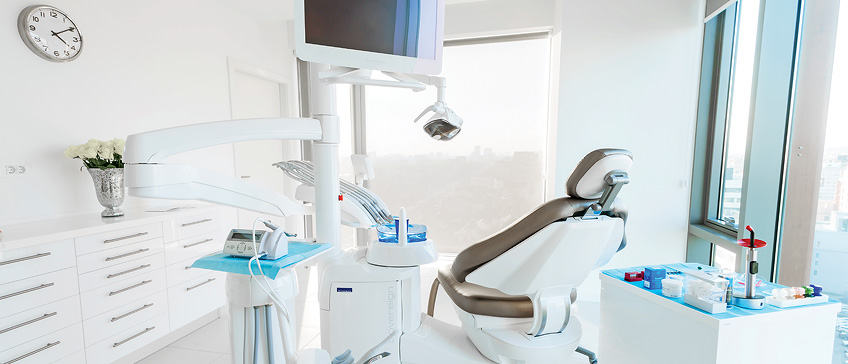Endodontic treatment is carried out when pathological process within the tooth occurs and deeply below the enamel and dentin, and reaches the dental pulp placed in the dental canal, which is often caused by caries. The dental pulp is composed of nerve tissue and blood vessels, and therefore the infection can cause bone inflammation and development of “granuloma”. The aim of endodontic dental root canal treatment is to prevent the spreading of the infection and to preserve the tooth and its root.
About the procedure
Endodontology is a branch of dentistry dealing with prevention, diagnosis and treatment of anomalies within the pulp, in other words treatment of dental root canals. Dental pulp is placed in the dental canal of the dental root in every tooth. The pulp is made of nerves, blood vessels and connective tissue, which play an important role in tooth development and its vitality. Endodontic treatment is applied when caries destroys the tooth deeply below the enamel, inside the dentin and reaches the pulp. Toxins and bacteria causes infection of the pulp, which causes even greater sensitivity of the tooth when biting and finally pain. If the inflamed tooth is not treated, the inflammation spreads to the bone and creates an infection process around the tip of the root and the development of the so called “granuloma”. The goal of every therapy is to treat and preserve the tooth and its root, but the treatment itself requires patience which is often an irreplaceable and necessary part of endodontic treatment of the tooth. The treated tooth is equally functional as the vital ones, and by using prosthetic implants (crowns and bridges) the aesthetics of the smile can be maintained.
Am I a candidate?
Candidates have these symptoms:
- pulsating pain ( pronounced at night, feeling pain as if "heartbeat")
- pain when biting
- tooth sensitivity to temperature changes
- swelling
- abscess at the tip of the tooth’s root visible in the radiographic image
Pain is not necessarily a symptom of the development of pulp infection which can cause bone inflammation below the tooth’s root (granuloma). Undetected and untreated granuloma can stay still or grow without symptoms, while in some cases it is accompanied by great pain and swelling which points to an acute periapical process with an abscess (a gum boil) at the tip of the tooth’s root. Talking with the dentist about tooth sensitivity is the best way of determining whether there is a need for endodontic treatment.
During the procedure
Before starting the endodontic treatment, it is necessary to take an x-ray image of the infected tooth in order for the dentist to learn about the anatomic and morphological characteristics of the tooth and plan better the treatment of the pathologic process. During the treatment local anaesthetics is used to make the procedure as painless as possible for the the client. During a procedure rubber dam (Kofferdam or Rubberdam) is used to ensure high isolation of tooth from the bacteria in the saliva and surrounding tissue, which is the key for a successful treatment. Endodontic treatment starts by removing the infected tooth tissue, removing the inflamed tooth pulp and chemical or mechanical cleaning of the canal with the aim of eliminating bacteria and infected dentin from the root canal. After it is widened and formed, the canal is filled in with a biocompatible material in order to prevent the intrusion of bacteria to the tip of the tooth’s root and the infection to reappear. Hermetic filling of the root canal and restoring the tooth crown permanently solves the problem. The treatment process does not have to be painful, but it asks for more visits and effort for one tooth.
After the endodontic treatment, the tooth surface is significantly destructed and in some cases prosthetic implants or bridges are recommended in order to additionally protect the tooth and preserve its functionality as well as the tooth aesthetics.
Free online consultation with our doctors
Send enquiryFeel free to contact us
By phone on +385 1 46 10 225 or through our online contact form
Send enquiry
Locations
| Green Gold Tower Ul. Grada Vukovara 269a/10, 10000 Zagreb |
|
| Donji grad Frana Folnegovića 1c/1, 10000 Zagreb |
|
| Dioklecijan Hotel & Residence Kranjčevićeva 45/1, 21000 Split |
Where to park
| Parking available in Green Gold centre, Zagreb underground garage. For detailed information download a map |


